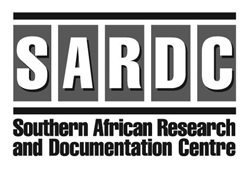Members
SN Aboitiz Power Group
SN Aboitiz Power Group or SNAP Group develops and operates best-in-class renewable energy facilities in the Philippines and provides innovative energy solutions to its customers. It seeks to expand its portfolio by exploring, building, and investing in renewable energy facilities and complementary technologies. With 673 megawatts (MW) of total capacity, SNAP generates clean, renewable energy for its customers.

Southern African Research and Documentation Centre
 SARDC is an independent regional knowledge resource centre that works to enhance the effectiveness of key development processes through the collection, production and dissemination of information, and enabling the capacity to generate and use knowledge.
SARDC is an independent regional knowledge resource centre that works to enhance the effectiveness of key development processes through the collection, production and dissemination of information, and enabling the capacity to generate and use knowledge.
Communicating Energy in Southern Africa Project, whose goal is to promote and catalyze dialogue on the development of national and regional policies that allow for new private sector investment into the power sector and greater access as well as more efficient use of primary energy sources.
Statkraft
 Statkraft is a wholly state-owned power company established January 1, 1992. Statkraft has its owned board and is operated after commercial principles. Statkraft’s vision is to become a European leader in environmentally friendly energy.
Statkraft is a wholly state-owned power company established January 1, 1992. Statkraft has its owned board and is operated after commercial principles. Statkraft’s vision is to become a European leader in environmentally friendly energy.
• Statkraft is Norway’s largest producer of electric power and Norway’s third largest company. Average production amounts to 42 TWh a year. This is about 1/3 of the country’s total hydropower production.
• Statkraft, including Skagerak Energi and Trondheim Energiverk, employs about 2 200 people.
• Statkraft is Norway’s largest land-based taxpayer.
• Statkraft has ownership interests in the following energy companies: Agder Energi, Bergenshalvøens kommunale kraftselskap (BKK) and Fjordkraft. All of these are part of the Statkraft Alliance. In terms of size, the Statkraft Alliance is number three in the Nordic production market and number two in the Norwegian consumer market. In addition, Statkraft has stakes in E-CO, Hedmark Energi and the Swedish company Sydkraft.
• In a European perspective, Statkraft is a small power producer, yet at the same time it is Europe’s second largest producer of renewable energy.
Tanzania Electric Supply Company Ltd (TANESCO)
TANESCO is a parastatal organisation created in 1964 and is under the Ministry of Energy and Minerals. The company’s core business is to generate, transmit, distribute and sell electricity to customers in Tanzania mainland and bulk supply to the island of Zanzibar. The company’s total installed capacity is 793MW of which 561MW is hydropower and the rest 232MW is thermal. About 96% of the installed capacity is located in the interconnected grid. The rest are isolated diesel power stations. The existing interconnected grid network consists of 2,781km of 220kV, 1,403km of 132kV, and 459km of 66kV. Distribution network consists of 8,325km of 33kV, 3,732km of 11kV and 12,992km of lower voltages. In 2002, there were about 473,546 domestic, light commercial and light industrial customers and 1,335 large industrial and commercial customers lined by these distribution lines.
The European Small Hydropower Association (ESHA)
 The European Small Hydropower Association (ESHA) is a non- profit International Association representing the sector of small hydropower. The association was founded in 1989 as an initiative of the European Commission. ESHA is a founding member of EREC (European Renewable Energy Council), which groups together all main European renewable energy industry and research associations. Since March 2000, ESHA has shared its headquarters with other EREC members in the Renewable Energy House, in Brussels.
The European Small Hydropower Association (ESHA) is a non- profit International Association representing the sector of small hydropower. The association was founded in 1989 as an initiative of the European Commission. ESHA is a founding member of EREC (European Renewable Energy Council), which groups together all main European renewable energy industry and research associations. Since March 2000, ESHA has shared its headquarters with other EREC members in the Renewable Energy House, in Brussels.
ESHA is structured as a federation of EU national hydropower associations and is open to members from all sectors involved in small hydropower, i.e. equipment manufacturers, public utilities, independent producers, consultants, etc.
ESHA
Renewable Energy House Rue du Trône 26, 1000 Brussels – Belgium
Telephone: 32 2 546.19.45
Fax : 32 2 546.19.47
E-mail Secretariat: info@esha.be
URL: http://www.esha.be
The Norwegian Ministry of Petroleum and Energy (OED)
 The principal responsibility of the Ministry of Petroleum and Energy is to achieve a coordinated and integrated energy policy.
The principal responsibility of the Ministry of Petroleum and Energy is to achieve a coordinated and integrated energy policy.
A primary objective is to ensure high value creation through efficient and environment-friendly management of Norway’s energy resources.
Without good competitiveness, efficient use of resources and profitability in the energy sector, it will not be possible to create the jobs and revenues needed to maintain prosperity and employment.
Energy policy must be formulated to ensure the best possible use, within environmentally-acceptable limits, of the country’s overall supplies of labour, knowledge, capital and natural resources.
As the secretariat for the political leadership, the ministry’s objectives will develop through the government’s energy policy goals — as expressed, for instance, in relevant White Papers and Propositions (Bills) to the Parliament.
URL: http://www.regjeringen.no/en/ministries/oed.html?id=750
Uganda Electricity Generation Company Limited (UEGCL)
 UEGCL Main Objective is the development, efficient operation and maintenance of Power plants and the sustainable generation and sale of affordable electricity to consumers.
UEGCL Main Objective is the development, efficient operation and maintenance of Power plants and the sustainable generation and sale of affordable electricity to consumers.
URL: https://uegcl.com/

 India
India